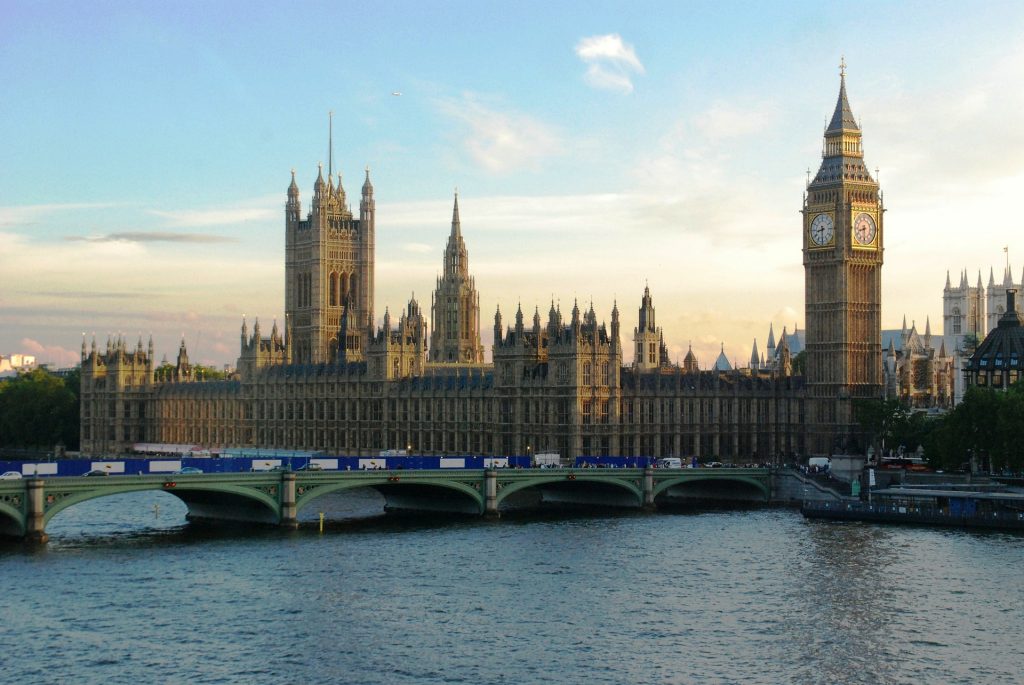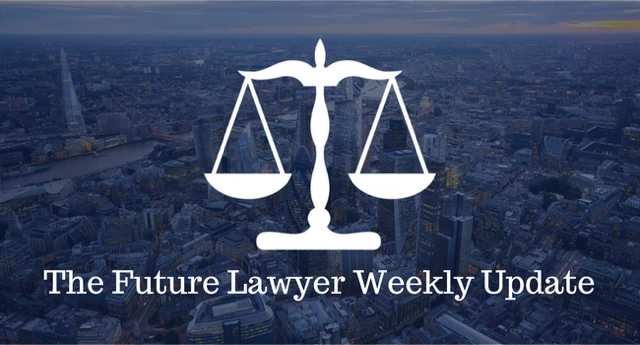
Clear the Lobby: What Laws are MPs voting on this week? W/C 23rd May 2022
May 23, 2022
BPP BRIDGE PROGRAMME COURSES
May 27, 2022The Death of the SPAC?
By Stella Clarke
The Special Purpose Acquisition Company (SPAC) has seen a significant resurgence in popularity over the last two years, with hundreds of billions of dollars being invested into blank check companies. Indeed, 2021 was dubbed the ‘Year of the SPAC’, after a total of US$172.2 billion dollars was raised by SPAC IPOs globally. However, it seems they might not be quite so spectacular after all.
Within the context of the record-breaking M&A boom during the Covid-19 pandemic, many businesses became enticed by the alternative route to list on the stock market. A SPAC is essentially a publicly traded company that is created for the sole purpose of acquiring or merging with an already existing private company to take it public. This process is known as a de-SPAC. In comparison to a traditional IPO, it boasts some perceived advantages. In particular, a SPAC transaction has a shorter timeline to listing, less regulation, and can be negotiated privately which allows for greater certainty of pricing. Yet, this impressive growth has been stunted by a series of recent blows including; poorly performing deals and increased regulatory scrutiny.
The ongoing case of re MultiPlan Corp. Stockholders Litigation highlights the potential pitfalls of the SPAC model. After the price of Multiplan shares dropped to less than $5, shareholders are suing the directors of the SPAC vehicle, Churchill, for breach of fiduciary duties. The suing shareholders argue that the SPAC structure is “conflict-laden and practically invites fiduciary misconduct”. In particular here is the argument that the board of Churchill were motivated to drive through a low-quality merger because they had free shares. As is common place in SPAC transactions, sponsors often receive highly discounted rates and redemption opportunities which can result in heavy dilution for shareholders.
To tackle these problems, the US Securities and Exchange Commission aims to tighten disclosure requirements and make these companies more transparent. Similarly, to the argument made in Multiplan, the proposal deems that deferred fees reaped by investment banks in subsequent de-SPAC transactions provide strong financial incentive to complete a merger. With this in mind, it recommends in extending the responsibility for target companies’ projections to the SPAC sponsors and investment banks involved. To achieve this, any banks that underwrote a SPAC’s IPO would be given statutory underwriting status in the SPAC and any later de-SPAC transaction. This measure would significantly increase the liability on banks. As statutory underwriters, banks could be named as defendants in lawsuits concerning misstatements or omissions in the disclosure of material to investors related tothe de-SPAC. In response to the proposed new rules, Goldman Sachs, the second largest underwriter for SPAC companies in 2021, announced last week that it would be pausing work on new blank cheque corporations.
This step reflects the wider market hesitance towards this model of listing on the stock exchange. In fact, according to Deologic data, more SPAC listings were withdrawn in the past two months than there were new listings. Whilst the measures are not yet enforceable it seems likely to mark the beginning of the end for the formally ‘it’ investment model.
How will it affect lawyers?
Whilst the proposals are yet to be enacted, it marks an important change in the regulatory environment for SPAC deal making. The impact of which is likely to affect commercial law firms representing financial institutions, such as banks. Lawyers have a pivotal role in protecting banks against serious potential risk to their balance sheets, for example, by ensuring that due diligence is conducted properly and underwriting agreements contain standard indemnity provisions. Overall, law firms must ensure that their clients are prepared to operate within a tougher and more regulated market.
Addressing CryptoPhobia: Friday the 13th
By Edward
When it comes to bad luck, there are few superstitions as pervasive in Western culture as that of Friday the 13th. The notion of a day that can bring misfortune is deeply embedded. Though it’s uncertain exactly when this particular tradition began, negative superstitions have swirled around the number 13 for centuries.
There’s even a name to describe the irrational dread of the date: paraskevidekatriaphobia — a specialized form of triskaidekaphobia, a fear of the number 13- the supposedly unlucky day. This year, however, there is only one in the calendar: Friday, the 13th of May 2022.
In Biblical tradition, the concept of unlucky Fridays, stretches back even further than the crucifixion: Friday is said to be the day that Adam and Eve ate the forbidden fruit from the Tree of Knowledge, 13 guests attended the last supper, just as Jesus was crucified on a Friday.
In more recent times, a number of tragic events have occurred on Friday the 13th, including the German bombing of Buckingham Palace (September 1940); the death of rap icon Tupac Shakur (September 1996) and the crash of the Costa Concordia cruise ship off the coast of Italy, which killed 30 people (January 2012).
Decline in Cryptocurrency Assets
The stock market quite understandably is often riddled with superstition. Investors, The Daily Telegraph reports, still swear by yet another old saying ‘sell in May and go away’ reflecting an assumption, garnered from, one assumes, generations of navel-gazing, that stocks under-perform between May and the end of October. On the back of the bad luck which surrounds Friday the 13th, The recent decline in cryptocurrency assets is worthy of mention.
Bitcoin, the largest crypto, dipped below $36,000 Saturday and nosedived throughout the weekend dropping below $29,000 Thursday— its lowest level since December 2020. Ethereum has followed bitcoin’s lead, with its price trading below $2,000 Thursday. TerraUSD (UST), the third-biggest stable coin, has dropped below the $1 level multiple times over the last few days, falling to $0.2998 Wednesday, according to CoinMarketCap data. The depegging of TerraUSD (UST) on Tuesday triggered market sell-offs, and now Tether (USDT) appears to be losing its footing, having slipped against the U.S. dollar. The price of USDT has recovered from its very brief dip to $0.95 this Friday 13th, but it still has yet to reach dollar parity. This is problematic for the crypto markets as the USDT was designed to maintain stability and should hold as close to $1 as possible.
Market Uncertainty
Indeed, It’s been a rocky week for Bitcoin and other cryptocurrencies, largely driven by ongoing macroeconomic uncertainties as investors grapple with continued surging inflation, geopolitical tensions, and changes in U.S. monetary policy. Cryptocurrency’s wider adoption and its recent alignment with the stock market make it even more linked with macroeconomic factors.
Experts described the slump as being attributed to a number of factors such as loss of confidence in the crypto market amid economic pressures around the world brought on by Russia’s invasion of Ukraine and post covid Lockdowns. It follows recent crashes brought on by Tesla making a U-turn on accepting Bitcoin as payment for its products and China clamping down on initial coin offerings, block exchanges and warned against speculative trading. The electric car company bought $1.5b (£1.06b) of Bitcoin shares, which in turn sent the market price of both the crypto and Tesla soaring, but those days are a distant memory to traders.
A further blow was dealt when China ordered Bitcoin mining in its Sichuan province to shut down completely and furthermore told banks to stop supporting crypto transactions, in a latest wave of restrictions on cryptos. Now the country’s central bank, People’s Bank of China, has effectively banned digital coins after proscribing all transactions of cryptocurrencies are illegal.
Reactionary Measures
As a reactionary measure against the ongoing uncertainty within the Terra ecosystem, Binance suspended all withdrawals for LUNA and UST tokens for six hours (between midnight to 6:00 AM EST), citing a high volume of pending withdrawal transactions. Crypto Twitter, however, reacted to Binance’s announcement by questioning the inherent values of decentralization that the crypto community stands for. Comparing the move to a centralized approach usually sported by traditional finance. As users across the globe get barred from withdrawing their own funds, the community reiterated the phrase “not your keys not your coins,” and highlighted Binance’s funds’ suspension as one of the major cons of a centralized crypto exchange.
As Coin telegraph recently reported, MicroStrategy, the company with the largest Bitcoin treasury, hinted that it would buy into any significant weakness toward $20,000 in an attempt to support the market.
As turmoil over the fate of sister token, TerraUSD (UST), continued, LUNA markets appeared to lose all faith, with executives eventually halting the Terra blockchain altogether.
Terra validators have decided to halt the Terra chain to prevent governance attacks following severe $LUNA inflation and a significantly reduced cost of attack. However, Terra has committed to burn $1.4B UST and stake 240M LUNA to ‘stop the bleeding’.
How Investors Should Deal With Uncertainty
Cryptocurrency volatility is nothing new, and you should be comfortable with this if you decide to invest. For example, “If Elon Musk puts hashtag Bitcoin in his Twitter bio, it sends Bitcoin up 10%,”. This unpredictability is part of the reason why investing experts warn against investing huge amounts of your portfolio into a risky asset like crypto. Many recommend keeping your crypto holdings to less than 5% of your total portfolio. For new investors, day-to-day swings can seem frightening. But if you’ve invested with a buy-and-hold strategy, dips are nothing to panic about. This is the traditional “set it and forget it” advice that many traditional long-term investors follow. “The most important thing any investor can do, whether they are investing in Bitcoin or stocks, is not just to have a plan in place, but to also have a plan they can stick with. While buying the dip might be attractive, especially with an asset that you really like, it might not always be the best idea at the moment.
Some investors are of the opinion that the sharp spiral down movement in prices could be attributed to the bad luck which follows Friday the 13th. However, it remains to be seen whether there would be more investor confidence to hold which would pump the prices or whether the end of cryptocurrency is near.
Sources
PATEL, PROTESTS AND PARLIAMENTARY POWERS – WHAT’S THE LINK?
By Amira Awan
We are constantly reminded of just how much influence the Government of today has on our Legal System and human rights in general, after all one of Parliament’s key roles is creating new legislation. In recent years there has been an immense number of bills (proposals for a new law) introduced in order to attempt to keep up with a rapidly evolving society that has faced more unprecedented change than there has been for decades -a global pandemic and a climate crisis is ironically just the ‘’tip of the iceberg’’.
However, as of recently the government’s legislative powers are being discussed more frequently than they have been in decades and in this article, I aim to paint a picture of how these powers can create division in British society.
A particular attempt by the government to create changes to our legislation that has achieved the attention and most definitely criticism of the masses is the ‘’Police, Crime, Sentencing and Courts Bill’’ which was originally introduced by former Conservative MP Robert Buckland in early 2021. The Bill was created in response to the meteoric increase in protests at the time, including those by Climate Change Activist Group ‘’Extinction Rebellion’’ who are infamously known for their unconventional protesting technique and by the BLACK LIVES MATTER protests that were catalysed by the tragic cold-blooded murder of George Floyd by police officers in Minneapolis, USA.
Under Robert Buckland the Bill proposed a variety of arguably repressive policies including giving the police ‘stop and search powers’ for individuals who were believed to be carrying ‘’anything’’ that could be used at a protest, as well as the ability to have ‘’more control over where and when protests took place” and whilst a select few- namely Home Secretary Priti Patel- encouraged the introduction of such dictatorial policies and deemed them “necessary”, this was ultimately not the case for the vast majority of the British Public as it sparked outrage across social media and also on the streets of Britain with millions taking part in ‘’Kill the Bill’’ protests. Significantly it was also not favoured by the Houses of Lords who were united in their rejection of all the policies that explicitly failed to undermine our Individual Liberties – making several amendments.
So, what has changed since then? Priti Patel has now taken ‘lead’ over this bill as Home Secretary and rather than address concerns she has made even more hugely controversial proposals including the ability for her to ban marches and demonstrations because they may be “disruptive”. Such proposals sparked outrage across the whole of our political infrastructure being branded as ‘’draconian’’ by experts. Activist group Liberty UK received over 100,000 signatures on a petition to ‘’Stop the Policing Bill’ and the Lords rejected 14 amendments to the Policing Bill in the month of January alone and have continued to make many rejections ( this is significant as the Lords typically never exercise their powers of scrutiny so frequently) former Home Secretary Lord Blunkett said the bill would “drive a wedge between the police and ordinary people” as well as warning that it would leave a legacy that was “toxic and long lasting”.
However, despite the pleas of many including Lawyers who claim that many of her policies “clearly violate international human rights standards” Priti Patel is adamant that she will continue to campaign for the introduction of many of the controversial aspects of her Bill and earlier this week she urged MPs to stop using “mob rule” and instead support her policies. These policies were outlined by the Queen during her most recent speech and include the power to punish those with a penalty of up to 12 months in prison for those who interfere with “key national infrastructure”-something which she has unsurprisingly received much criticism for.
Nevertheless, because we are a society whose foundations are built upon upholding justice and exercising our individual liberty it is unlikely that the government’s legislative powers will ever be able to truly overwhelm our powers of protest as everyone from teenagers on social media to peers in the House of Lords unite to campaign for what is fair.



